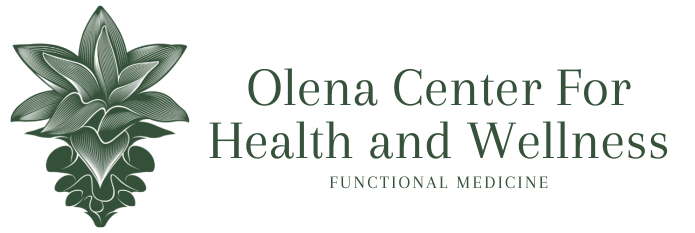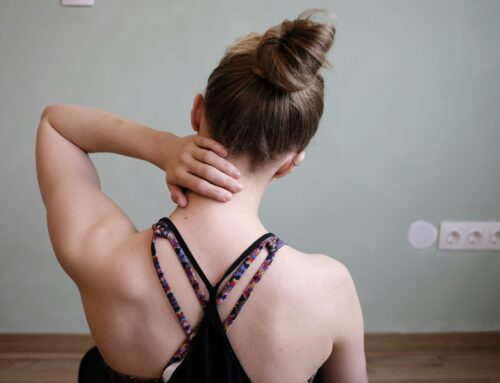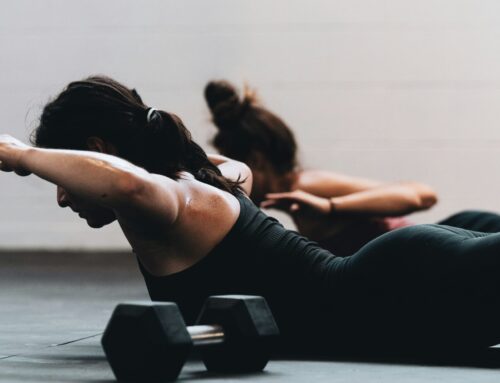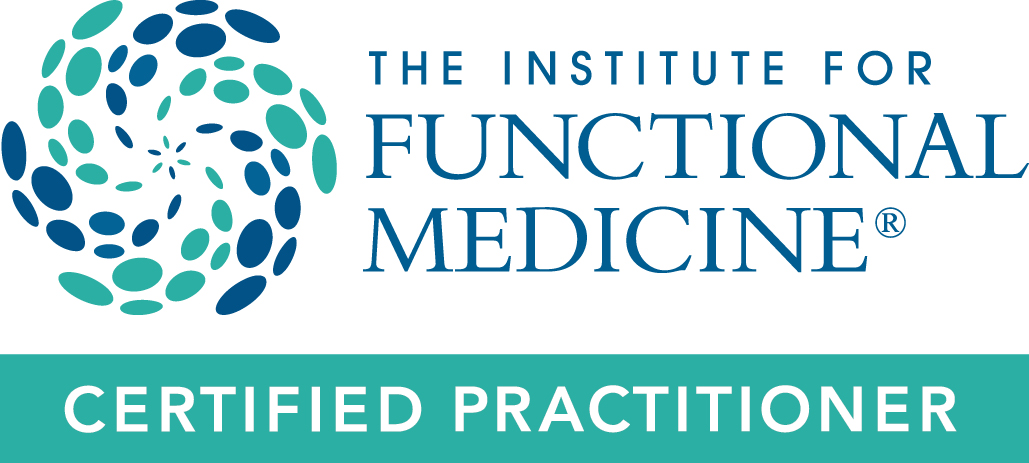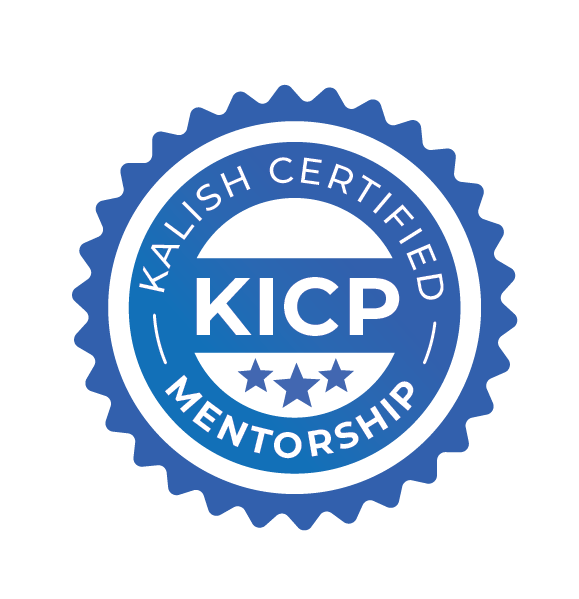As I approach my 45th birthday (incidentally, also the new colonoscopy age…), I am trying very hard to embrace aging.
I know, I know. Aging is inevitable… Why fight it…
(…but if one of you reading this has found the fountain of youth, created a time machine, or anything, feel free to message me).
This is not to say that nothing good has come with age — I love my increased wisdom (at least, I think I am wiser), enhanced perspective, thoughtful introspection, and increased comfort in my skin. I love that if I fart and it stinks and someone makes a big deal out of it, I am 100% A.O.K. saying “whoops” and moving on. My teenage self, on the other hand, would have been mortified.
Regardless of whether you have embraced getting older or not, I think most of us want to age well. I doubt anyone has ever said, “I can’t wait to be old and stuck in a wheelchair.” I believe most of us hope that when we hit retirement age, we will still be able to enjoy our usual activities, take trips, and play with our grandkids (or grand fur babies). Improving our muscle mass is one thing we can work on to keep us upright and doing a jig well into our 80s, 90s, or 100s.
We steadily lose muscle mass with age. Starting around age 50, we begin to lose muscle fiber; by age 80, we have lost about 50% (1). Even master athletes who have maintained a high fitness level throughout their lifespan lose 50% of their peak performance by age 80. While the degree of loss is variable by individual (depending on your sex, genetics, and lifestyle), the loss is inevitable and will affect us all.
This loss of muscle mass, also termed sarcopenia, is associated with frailty and disability. This frailty impairs our ability to perform our activities of daily living and increases our risk for falls and fractures. One-third of people over 65 suffer from falls annually (2). Falls in this age group are more concerning. Instead of suffering from a bruised ego, you are more likely to suffer from a fracture, which can be catastrophic; approximately one in five older adults will die within the first year after a hip fracture (3,4).
In addition to supporting movement, our skeletal muscles are also:
- The primary reservoir for protein. Protein is made from smaller components called amino acids. These amino acids are then used to create other essential things in our body — such as other proteins (like enzymes), hormones, and brain chemicals (such as serotonin and dopamine). In addition, amino acids serve as a fuel source.
- Regulators of glucose and lipid balance. Our muscles utilize a large portion of the glucose in our body and help regulate our overall metabolism.
As a result, muscle mass loss will affect many body systems, including metabolism, cognition, and heart and lung function. The loss of muscle mass will ultimately impact our quality of life, and severe losses can increase the need for long-term care placement (5).
Eek that sounds quite bleak.
Even bleaker is that we don’t have to wait until 50 to lose muscle mass. It can occur when we are younger at an accelerated rate due to acute or chronic diseases, such as cancer, infections, obesity, diabetes, and immobilization (6,7). These disease states increase catabolism, which is a breakdown process that will lead to muscle loss.
Now for the good news! Although we cannot halt muscle loss, we can slow its progression — even if you are an older person who doesn’t move much!
How?
Let’s pump you up! (Said in an Austrian accent inspired by Hans and Franz. For those of you too young to recall this Saturday Night Live routine, I highly encourage you to Google it).
To build muscle, we want to focus on resistance and weight-loading activities. What’s impressive is that in the process of building muscle with exercise, you will also accrue a whole other host of benefits from exercise, including:
- Reducing the rate of falls by 23% (2)
- Preventing bone loss and osteoporosis (8)
- Stimulating our mitochondria (our energy factories!) (9)
- Improving brain function. Long-term exercise will improve our brain plasticity and function and prevent neurologic diseases. But even short bouts of exercise can transiently improve our mental function (10)!
- Decrease our risk of death (11)!
What an excellent list of bonuses!
If you are starting out or not sure how to begin an exercise routine:
- Schedule it! Just like you schedule meetings and appointments, schedule your workout. Literally. Write it down in your calendar. I know most of you are very busy people. However, these are the most important appointments you can ever have, and nothing will happen if the most important person — you- does not show up.
- Get an accountability partner. Just like your teacher in school, having someone to keep you accountable often helps. My husband and I work out together daily and motivate (nag, shame, harass..) each other to work out even when we don’t feel like it or are feeling lazy.
- Keep yourself safe. If you are new to exercising and have health conditions, getting a check-up with your healthcare provider before starting an exercise program is a good idea. Beginning with a physical therapist or trainer is also good if you have balance or other mobility issues. A bonus is that your health insurance may even cover your therapy sessions! Don’t forget to warm up and stretch after a workout to prevent injuries.
- Consider rucking. While walking is excellent for getting you outside and reducing stress, a better way to walk would be to ruck, which is walking with a weighted backpack (or weighted vest). Thanks to Michael Easter, I have become a big fan of rucking. Rucking increases physical fitness and loads your bones for bone building, the other thing we lose steadily with age. It is also an easy add-on if you are already walking. Even better still is to hike with your weighted pack. Always start light, 5–10% of your body weight, to prevent injuries.
- Need some inspiration to start?
- Join a gym! A gym is a great way to connect with others and have others inspire you. I’m not sure about you, but knowing the instructor is watching me in an exercise class keeps me going!
- Find an at-home workout program online. Working out at home has enormous conveniences — it saves time, and you don’t have to find a babysitter! There are a ton of online classes you can do. The important thing is to find one that sings to you! Here are some that I like:
- Foundation training. This is a great program to strengthen muscles for stability. As simple as these moves look, they build up a sweat!
- Peleton. You don’t need to own any Peleton equipment to get an excellent workout from this app, and the instructors are phenomenal!
- Pvolve. This one requires more upfront cost for the gear, but it’s an excellent functional workout that strengthens muscles you never knew you had.
*I do not have any financial association with these companies — although I really should because they are great!
For my older patients, you may be thinking, “I am too old to pump iron.” Building muscle can indeed be more challenging as we get older. However, it is not impossible! Check out the biceps on my mother-in-law! In the last year, she has been doing some serious iron pumping at the gym, which has taken her from frail to “armed”!
I encourage you all to start exercising, and I look forward to dancing with you all when we are 100! Stay tuned for part 2!
Love,
Dr. Eri Shimizu
REFERENCES:
- Faulkner JA, Larkin LM, Claflin DR, Brooks SV. Age-related changes in the structure and function of skeletal muscles. Clin Exp Pharmacol Physiol. 2007 Nov;34(11):1091–6. doi: 10.1111/j.1440–1681.2007.04752.x. PMID: 17880359.
- Sherrington C, Fairhall N, Wallbank G, Tiedemann A, Michaleff ZA, Howard K, Clemson L, Hopewell S, Lamb S. Exercise for preventing falls in older people living in the community: an abridged Cochrane systematic review. Br J Sports Med. 2020 Aug;54(15):885–891. doi: 10.1136/bjsports-2019–101512. Epub 2019 Dec 2. PMID: 31792067.
- Downey C, Kelly M, Quinlan JF. Changing trends in the mortality rate at 1-year post hip fracture — a systematic review. World J Orthop. 2019 Mar 18;10(3):166–175. doi: 10.5312/wjo.v10.i3.166. PMID: 30918799; PMCID: PMC6428998.
- Schnell S, Friedman SM, Mendelson DA, Bingham KW, Kates SL. The 1-year mortality of patients treated in a hip fracture program for elders. Geriatr Orthop Surg Rehabil. 2010 Sep;1(1):6–14. doi: 10.1177/2151458510378105. PMID: 23569656; PMCID: PMC3597289.
- Cruz-Jentoft AJ, Bahat G, Bauer J, Boirie Y, Bruyère O, Cederholm T, Cooper C, Landi F, Rolland Y, Sayer AA, Schneider SM, Sieber CC, Topinkova E, Vandewoude M, Visser M, Zamboni M; Writing Group for the European Working Group on Sarcopenia in Older People 2 (EWGSOP2), and the Extended Group for EWGSOP2. Sarcopenia: revised European consensus on definition and diagnosis. Age Ageing. 2019 Jan 1;48(1):16–31. doi: 10.1093/ageing/afy169. Erratum in: Age Ageing. 2019 Jul 1;48(4):601. PMID: 30312372; PMCID: PMC6322506.
- Hanlon P, Nicholl BI, Jani BD, Lee D, McQueenie R, Mair FS. Frailty and pre-frailty in middle-aged and older adults and its association with multimorbidity and mortality: a prospective analysis of 493 737 UK Biobank participants. Lancet Public Health. 2018 Jul;3(7):e323-e332. doi: 10.1016/S2468–2667(18)30091–4. Epub 2018 Jun 14. PMID: 29908859; PMCID: PMC6028743.
- Suetta C, Haddock B, Alcazar J, Noerst T, Hansen OM, Ludvig H, Kamper RS, Schnohr P, Prescott E, Andersen LL, Frandsen U, Aagaard P, Bülow J, Hovind P, Simonsen L. The Copenhagen Sarcopenia Study: lean mass, strength, power, and physical function in a Danish cohort aged 20–93 years. J Cachexia Sarcopenia Muscle. 2019 Dec;10(6):1316–1329. doi: 10.1002/jcsm.12477. Epub 2019 Aug 16. PMID: 31419087; PMCID: PMC6903448.
- Daly RM, Dalla Via J, Duckham RL, Fraser SF, Helge EW. Exercise for the prevention of osteoporosis in postmenopausal women: an evidence-based guide to the optimal prescription. Braz J Phys Ther. 2019 Mar-Apr;23(2):170–180. doi: 10.1016/j.bjpt.2018.11.011. Epub 2018 Nov 22. PMID: 30503353; PMCID: PMC6429007.
- Memme JM, Erlich AT, Phukan G, Hood DA. Exercise and mitochondrial health. J Physiol. 2021 Feb;599(3):803–817. doi: 10.1113/JP278853. Epub 2019 Dec 9. PMID: 31674658.
- Walsh JJ, Tschakovsky ME. Exercise and circulating BDNF: Mechanisms of release and implications for the design of exercise interventions. Appl Physiol Nutr Metab. 2018 Nov;43(11):1095–1104. doi: 10.1139/apnm-2018–0192. Epub 2018 May 18. PMID: 29775542.
- Ekelund, U. et al. Does physical activity attenuate, or even eliminate, the detrimental association of sitting time with mortality? A harmonised meta-analysis of data from more than 1 million men and women. Lancet388, 1302–1310 (2016).
- Pasiakos SM, McLellan TM, Lieberman HR. The effects of protein supplements on muscle mass, strength, and aerobic and anaerobic power in healthy adults: a systematic review. Sports Med. 2015 Jan;45(1):111–31. doi: 10.1007/s40279–014–0242–2. PMID: 25169440.
- Morton RW, Murphy KT, McKellar SR, Schoenfeld BJ, Henselmans M, Helms E, Aragon AA, Devries MC, Banfield L, Krieger JW, Phillips SM. A systematic review, meta-analysis and meta-regression of the effect of protein supplementation on resistance training-induced gains in muscle mass and strength in healthy adults. Br J Sports Med. 2018 Mar;52(6):376–384. doi: 10.1136/bjsports-2017–097608. Epub 2017 Jul 11. Erratum in: Br J Sports Med. 2020 Oct;54(19):e7. PMID: 28698222; PMCID: PMC5867436.
- Valenzuela PL, Morales JS, Emanuele E, Pareja-Galeano H, Lucia A. Supplements with purported effects on muscle mass and strength. Eur J Nutr. 2019 Dec;58(8):2983–3008. doi: 10.1007/s00394–018–1882-z. Epub 2019 Jan 2. PMID: 30604177.
- Cuyul-Vásquez I, Pezo-Navarrete J, Vargas-Arriagada C, Ortega-Díaz C, Sepúlveda-Loyola W, Hirabara SM, Marzuca-Nassr GN. Effectiveness of Whey Protein Supplementation during Resistance Exercise Training on Skeletal Muscle Mass and Strength in Older People with Sarcopenia: A Systematic Review and Meta-Analysis. Nutrients. 2023 Aug 2;15(15):3424. doi: 10.3390/nu15153424. PMID: 37571361; PMCID: PMC10421506.
- Jang YJ. The Effects of Protein and Supplements on Sarcopenia in Human Clinical Studies: How Older Adults Should Consume Protein and Supplements. J Microbiol Biotechnol. 2023 Feb 28;33(2):143–150. doi: 10.4014/jmb.2210.10014. Epub 2022 Oct 31. PMID: 36474318; PMCID: PMC9998208.
- Thomas DK, Quinn MA, Saunders DH, Greig CA. Protein Supplementation Does Not Significantly Augment the Effects of Resistance Exercise Training in Older Adults: A Systematic Review. J Am Med Dir Assoc. 2016 Oct 1;17(10):959.e1–9. doi: 10.1016/j.jamda.2016.07.002. PMID: 27670605; PMCID: PMC5065619.
- Stares A, Bains M. The Additive Effects of Creatine Supplementation and Exercise Training in an Aging Population: A Systematic Review of Randomized Controlled Trials. J Geriatr Phys Ther. 2020 Apr/Jun;43(2):99–112. doi: 10.1519/JPT.0000000000000222. PMID: 30762623.
- Dos Santos EEP, de Araújo RC, Candow DG, Forbes SC, Guijo JA, de Almeida Santana CC, Prado WLD, Botero JP. Efficacy of Creatine Supplementation Combined with Resistance Training on Muscle Strength and Muscle Mass in Older Females: A Systematic Review and Meta-Analysis. Nutrients. 2021 Oct 24;13(11):3757. doi: 10.3390/nu13113757. PMID: 34836013; PMCID: PMC8619193.
- Moon A, Heywood L, Rutherford S, Cobbold C. Creatine supplementation: can it improve quality of life in the elderly without associated resistance training? Curr Aging Sci. 2013 Dec;6(3):251–7. doi: 10.2174/1874609806666131204153102. PMID: 24304199.
- Forbes SC, Cordingley DM, Cornish SM, Gualano B, Roschel H, Ostojic SM, Rawson ES, Roy BD, Prokopidis K, Giannos P, Candow DG. Effects of Creatine Supplementation on Brain Function and Health. Nutrients. 2022 Feb 22;14(5):921. doi: 10.3390/nu14050921. PMID: 35267907; PMCID: PMC8912287.
- Ainsley Dean PJ, Arikan G, Opitz B, Sterr A. Potential for use of creatine supplementation following mild traumatic brain injury. Concussion. 2017 Mar 21;2(2):CNC34. doi: 10.2217/cnc-2016–0016. PMID: 30202575; PMCID: PMC6094347.
- Antonio J, Candow DG, Forbes SC, Gualano B, Jagim AR, Kreider RB, Rawson ES, Smith-Ryan AE, VanDusseldorp TA, Willoughby DS, Ziegenfuss TN. Common questions and misconceptions about creatine supplementation: what does the scientific evidence really show? J Int Soc Sports Nutr. 2021 Feb 8;18(1):13. doi: 10.1186/s12970–021–00412-w. PMID: 33557850; PMCID: PMC7871530.
- Post A, Tsikas D, Bakker SJL. Creatine is a Conditionally Essential Nutrient in Chronic Kidney Disease: A Hypothesis and Narrative Literature Review. Nutrients. 2019 May 10;11(5):1044. doi: 10.3390/nu11051044. PMID: 31083291; PMCID: PMC6567063.
- van der Veen Y, Post A, Kremer D, Koops CA, Marsman E, Appeldoorn TYJ, Touw DJ, Westerhuis R, Heiner-Fokkema MR, Franssen CFM, Wallimann T, Bakker SJL. Chronic Dialysis Patients Are Depleted of Creatine: Review and Rationale for Intradialytic Creatine Supplementation. Nutrients. 2021 Aug 6;13(8):2709. doi: 10.3390/nu13082709. PMID: 34444869; PMCID: PMC8400647.
- Heileson JL, Funderburk LK. The effect of fish oil supplementation on the promotion and preservation of lean body mass, strength, and recovery from physiological stress in young, healthy adults: a systematic review. Nutr Rev. 2020 Dec 1;78(12):1001–1014. doi: 10.1093/nutrit/nuaa034. PMID: 32483626.
- Tomczyk M, Heileson JL, Babiarz M, Calder PC. Athletes Can Benefit from Increased Intake of EPA and DHA-Evaluating the Evidence. Nutrients. 2023 Nov 26;15(23):4925. doi: 10.3390/nu15234925.
- Bischoff-Ferrari HA, Vellas B, Rizzoli R, Kressig RW, da Silva JAP, Blauth M, Felson DT, McCloskey EV, Watzl B, Hofbauer LC, Felsenberg D, Willett WC, Dawson-Hughes B, Manson JE, Siebert U, Theiler R, Staehelin HB, de Godoi Rezende Costa Molino C, Chocano-Bedoya PO, Abderhalden LA, Egli A, Kanis JA, Orav EJ; DO-HEALTH Research Group. Effect of Vitamin D Supplementation, Omega-3 Fatty Acid Supplementation, or a Strength-Training Exercise Program on Clinical Outcomes in Older Adults: The DO-HEALTH Randomized Clinical Trial. JAMA. 2020 Nov 10;324(18):1855–1868. doi: 10.1001/jama.2020.16909. PMID: 33170239; PMCID: PMC7656284.
- Timraz M, Binmahfoz A, Quinn TJ, Combet E, Gray SR. The Effect of Long Chain n-3 Fatty Acid Supplementation on Muscle Strength in Older Adults: A Systematic Review and Meta-Analysis. Nutrients. 2023 Aug 14;15(16):3579. doi: 10.3390/nu15163579. PMID: 37630768; PMCID: PMC10458650.
- Vaes AMM, Brouwer-Brolsma EM, Toussaint N, de Regt M, Tieland M, van Loon LJC, de Groot LCPGM. The association between 25-hydroxyvitamin D concentration, physical performance and frailty status in older adults. Eur J Nutr. 2019 Apr;58(3):1173–1181. doi: 10.1007/s00394–018–1634–0. Epub 2018 Apr 25. PMID: 29691654; PMCID: PMC6499878.
- Vaes AMM, Tieland M, Toussaint N, Nilwik R, Verdijk LB, van Loon LJC, de Groot LCPGM. Cholecalciferol or 25-Hydroxycholecalciferol Supplementation Does Not Affect Muscle Strength and Physical Performance in Prefrail and Frail Older Adults. J Nutr. 2018 May 1;148(5):712–720. doi: 10.1093/jn/nxy024. PMID: 30053278.
- Ren Y, Lu A, Wang B, Wang C. Nutritional Intervention Improves Muscle Mass and Physical Performance in the Elderly in the Community: A Systematic Review and Meta-Analysis. Life (Basel). 2023 Dec 31;14(1):70. doi: 10.3390/life14010070. PMID: 38255685; PMCID: PMC10817341.
For more useful information on functional holistic health, you can visit our FREE video library here.
About the Author:
Dr. Eri Shimizu is a board certified in Internal Medicine Doctor and certified through the Institutes of Functional Medicine. She earned a Bachelor of Science in Environmental Bioengineering from the University of Hawaii at Manoa and graduated summa cum laude from Creighton University Medical School. She completed her Internal Medicine residency at UCLA and worked at a Los Angeles county hospital. In 2012, she returned to Hawaii and served as a Hospitalist at Maui Memorial Medical Center. Maui is now home with her husband, two children, and a fighting fish named Rainbow.
Schedule a FREE Functional Medicine Health Consult with Dr. Eri.
